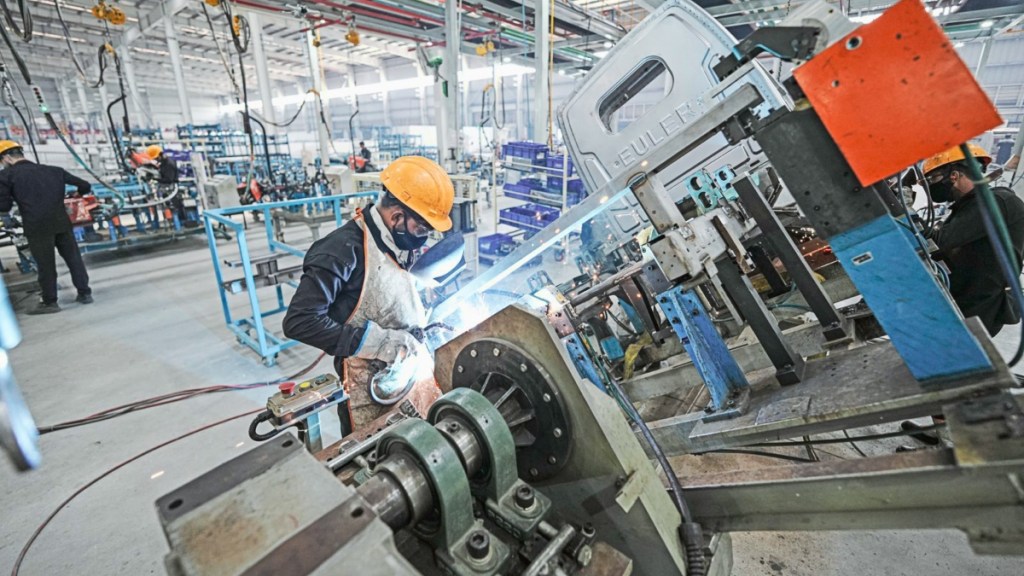India’s manufacturing activity recorded a drop to 57.5 in August, in comparison to 58.1 in July, but above its long-run average of 54.0, signalling a substantial improvement in operating conditions, data released by S&P Global on Monday showed.
Pranjul Bhandari, Chief India Economist, HSBC, said, “The Indian manufacturing sector continued to expand in August, although the pace of expansion moderated slightly. New orders and output also mirrored the headline trend, with some panellists citing fierce competition as a reason for slowdown. Nevertheless, all three indicators remain well above their historical averages.
The Indian manufacturers reported softer increases in new business and output during August, albeit with rates of expansion remaining elevated by historical standards. The HSBC report stated that while business confidence retreated, firms scaled up buying levels in a bid to safeguard against input shortages. The latest upturn in pre-production inventories was one of the strongest seen in 19-and-a-half years of data collection, it said, while maintaining that one factor that supported the rise in purchasing activity was a moderation in cost pressures.
The rate of input price inflation softened to the slowest in five months. Concurrently, demand resilience meant that firms were comfortably able to share additional cost burdens with their clients by lifting selling prices.
“On a positive note, the rise in input costs slowed sharply. Manufacturers increased their raw material buying activity in order to build safety stocks. In line with input costs, the pace of output price inflation also decelerated, but the deceleration was to a much smaller extent, thereby increasing margins for manufacturers. Business outlook for the year ahead moderated slightly in August, driven by competitive pressures and inflation concerns,” said Pranjul Bhandari.
The HSBC report said that new business rose sharply midway through the second fiscal quarter, but the pace of expansion eased to a seven-month low. The increase was primarily driven by advertising, brand recognition and healthy demand trends. Competitive conditions reportedly dampened growth, it added.
Furthermore, new export orders likewise increased at the weakest pace since the start of the 2024 calendar year. Yet, one-in-ten firms noted an improvement in international sales, which they associated with stronger demand from Asia, Africa, Europe and the US.
The report also said that the job creation softened midway through the second fiscal quarter as a few firms trimmed headcounts. Nevertheless, the overall rate of employment growth was solid in the context of historical data, it maintained.
“The rate of inflation was the second-fastest in close to 11 years. Firms reportedly shared additional cost burdens with their clients amid demand resilience. Finally, competitive pressures and inflation concerns hampered business confidence in August. Panellists were at their least optimistic since April 2023,” the report said.

